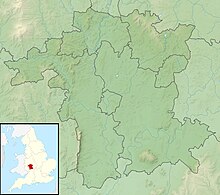| Siege of Worcester | |||||||
|---|---|---|---|---|---|---|---|
| Part of the First English Civil War | |||||||
 Worcester Cathedral from Fort Royal Hill. | |||||||
| |||||||
| Belligerents | |||||||
|
|
| ||||||
| Commanders and leaders | |||||||
| Henry Washington Governor of Worcester |
Edward Whalley (21 May – 8 July) Thomas Rainsborough (8 July – 23 July) | ||||||
| Strength | |||||||
| On 29 May 1,507 strong, excluding gentlemen volunteers and the city bands.[1] | On 29 May the Royalists thought the besieging force was about 5,000 strong,[1] but they may have been as few as 2,500[2] | ||||||
Shown within Worcestershire | |||||||
The second and longest siege of Worcester (21 May – 23 July 1646) took place towards the end of the First English Civil War, when Parliamentary forces under the command of Thomas Rainsborough besieged the city of Worcester, accepting the capitulation of the Royalist defenders on 22 July. The next day the Royalists formally surrendered possession of the city and the Parliamentarians entered Worcester 63 days after the siege began.[3][4]
- ^ a b Willis-Bund 1905, p. 184.
- ^ "2,500–5,000" (Atkin 2004, location 2337)
- ^ Thomas Rainsborough
- ^ #goodrich Places to Visit: Goodrich Castle

